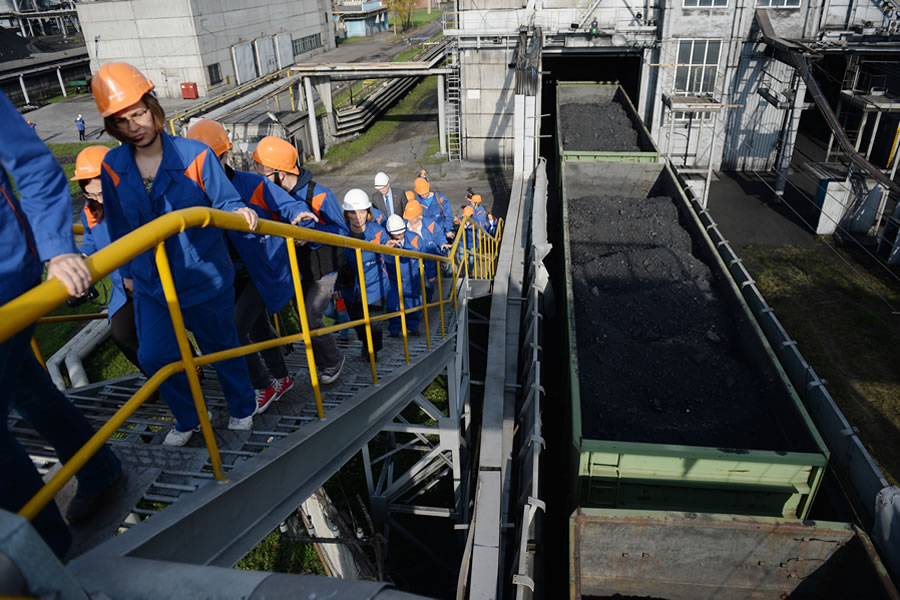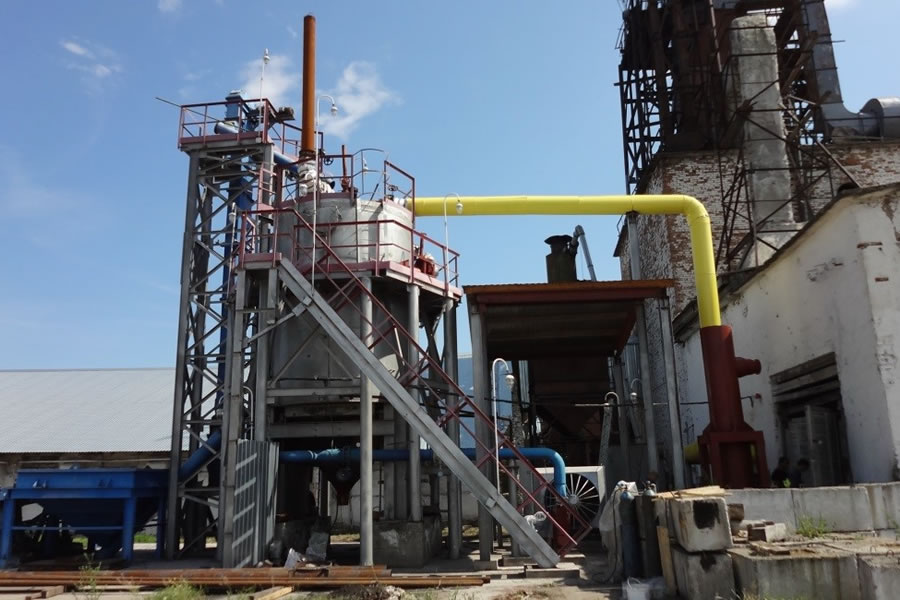The global energy industry is changing profoundly with renewable energy sources likely to meaningfully wean the market off fossil fuels by the end of the 21st century. Dr Sergey Alekseenko, a 2018 Global Energy Prize winner, Head of the Heat and Mass Transfer Research Laboratory at the Kutateladze Institute of Thermophysics, the Siberian Branch of the RAS, shares his thoughts on the future of the global energy industry and the place of the new hydrocarbon technologies in it.
Dr Alekseenko, scientists are predicting a close end of the hydrocarbon era. Is there any truth behind such forecasting?
It is certainly true that global oil reserves are limited, and at current production rates, they will probably last for another 40–50 years. According to the Paris Agreement, oil and gas will account for 60% of the global energy mix by 2050, dropping to 20% by 2100.
There are still enormous coal reserves remaining, but it is the most environmentally damaging fuel of all. Do you think coal will continue to be used as an energy source?
Indeed, global coal reserves are sufficient to last for about 200 years. The Paris Agreement imposes the harshest restrictions on coal providing for a sharp decrease in its primary energy consumption share fr om the current 28% to 10% in 2050.
Still, according to weighted forecasts of the Energy Research Institute of the Russian Academy of Sciences, the share of coal in energy consumption will drop insignificantly to 25% by 2040.
Coal will be even more important in power generation, accounting for about 31% of the total capacity.
Reftinskaya GRES, a coal-powered thermal power plant.
In other words, coal will remain an important energy source. What about new coal-based energy generation technologies, what role will they play in the future?
According to the Paris Agreement, oil and gas will account for 60% of the global energy mix by 2050, dropping to 20% by 2100.
The most promising is the so-called Oxy-fuel technology that involves burning a fuel using pure oxygen. It is, however, a very complex and costly combustion method, as approximately 10–15% of the energy produced is lost in the process. This is why the coal energy industry has been mainly focused on improving the fuel’s energy efficiency. The approaches are well-known and include increasing the thermal efficiency of the steam turbine cycle by raising the steam temperature and pressure, and creating powerful coal-fired thermal power plants with steam temperatures of 600–700°C.
An alternative is to create a boiler with a high-temperature turbine to superheat steam to 800–1,500°С by burning hydrogen or methane. This could help increase the power plant’s energy efficiency to some 50–55%.
At current production rates oil reserves will last another 40–50 years.
Who brings these technologies to life?
The most promising area in the coal industry development is the advanced processing of coal.
Some, like the micro milled coal and the coal-water slurry fuel, have been developed at the Institute of Thermophysics of the Siberian Branch of the RAS. However, the most promising area in the coal industry development is the advanced processing of coal. In addition to generating thermal and electrical power, this technology enables to produce a wide range of chemical products and is potentially zero-waste.
A good example is TERMOKOKS-S, a technology developed at the Krasnoyarsk-based Sibtermo company. It involves partial underground gasification of coal to obtain thermocoke and producer gas free of coal tar. Gas is burned on site in a gas boiler to produce thermal energy, while the high-calorific thermocoke serves as feedstock for a wide range of products including smokeless household fuel, carbon sorbents, and metallurgical coke substitutes. This is an illustration of a zero-waste technology that has already been implemented on a small scale.
Equipment to produce combustible gas from coal for drying grain, Balakhta, Krasnoyarsk Territory Source: termokoks.ru.
What projects will be implemented in the near future?
From approximately 2075 onward, non-hydrocarbon fuels, primarily renewables, will dominate the energy industry.
A pilot sorbent plant with a capacity of 6,000 tonnes per year will be launched at pilot project site in Akademgorodok of the Siberian Branch of the RAS. It will produce about 20,000 Gcal of heat energy per year with the thermal power from burning the combustible gas in the heat recovery boiler amounting to 10 MWt. As for the advanced processing of coal and other solid fuels, the most well developed technology at this stage is gasification, but it has yet to be rolled out on a larger scale.
Looking 40–50 years ahead, does it make sense to continue developing fossil fuels technologies?
That is a good question. It is estimated that the share of fossil fuels in the energy consumption will start to decline after 2050. Furthermore, from approximately 2075 onward, non-hydrocarbon fuels, primarily renewables, will dominate the energy industry. Still, fossil fuels will retain their significance well into the 21st century, accounting for up to a third of the world’s energy balance by 2100.
Moreover, there are vast reserves of gas hydrates – compounds of water and methane – that have not been included in this projections. We estimate that they amount to about 23 trillion tonnes of fuel equivalent. With an average annual consumption of 15 billion tonnes of fuel equivalent, gas hydrates could last as much as 1,500 years.
The share of fossil fuels in the energy consumption will start to decline after 2050.
A concurrent process is underway to enhance processing in petrochemistry and introduce new technologies. Which of them do you view as the most promising for the industry?
The Institute of Thermophysics created a plasma-based process for industrial projects of direct methane synthesis using natural gas and APG.
Russia currently has the Strategy for Scientific and Technological Development, which outlines a number of very exciting areas of growth in effective hydrocarbon conversion. Some of the proposed ideas are fairly obvious, such as smart conversion of oil and gas into high value added petrochemicals, or new technologies and materials for natural gas treatment, processing, transportation, and storage, etc.
Also, there are prospective areas that are progressing well. These include domestic development and production of catalysts and components for basic petrochemical and oil refining processes, use of heavy fractions and gases as feedstock for a variety of fuels (including arctic and motor fuel measuring to the highest environmental standards) and petrochemicals. Some of the initiatives are already underway. As one example, the Institute of Thermophysics created a plasma-based process for industrial projects of direct methanol synthesis using natural gas and APG.
Research is currently focused on creating a compact and efficient GTL technology for on-site natural gas conversion into conveniently handled liquids. When implemented, it will help eliminate natural gas transportation as more expensive, and also put an end to gas flaring practices. Another problem solved will be the shipment of methanol to production sites as an inhibitor of hydrate formation in natural gas.
New technologies will help increase output of top-quality motor fuel and high-tech synthetic materials.
How these and other technologies may impact the industry in the foreseeable future?
In Russia, the processing rate stands at about 82% compared to 96% in the US. The upside potential is obvious.
Most importantly, new technologies will drive a 2.5–3 times rise in the output of top-quality motor fuel and high-tech synthetic materials. Also, they will turn non-traditional hydrocarbons (bituminous rock, extra-heavy oil, carbonaceous shale, etc.) into feedstock for motor fuel and petrochemicals.
Can you give us some numbers on that?
Let us look at the processing rate, calculated as the volume of oil-derived motor fuel, lubricants, and other products divided by the volume of crude oil processed. In Russia, the processing rate stands at about 82% compared to 96% in the US. The upside potential is obvious, and there are numbers that support it: a 1% increase in the processing rate annually will contribute to RUB 100 bn in incremental output, with annual payments to the Russian budget potentially standing at RUB 20 bn.
Energy: science fiction to turn science fact
Hydrogen-based fuel cells have been hailed as one the most promising sources of energy that boasts highly efficient conversion of chemical energy into electricity (potentially up to 80%) and environmental friendliness, with water as the only emission. There is, however, one thing to consider: hydrogen is extremely energy intensive. Fuel cells that do not rely on hydrogen are also a possibility. According to Sergey Alekseenko, the Institute of Thermophysics is developing a fuel cell based on aluminium, which acts both as an energy source and as an anode.
In Brazil, 40% of demand for motor fuel is covered by sugarcane ethanol.
Use of special algae is another boom in bioenergy. Or take Brazil, wh ere 40% of demand for motor fuel is covered by sugarcane ethanol. One of the key benefits of biomass is that it is carbon neutral when burnt properly. “Russia can unlock more potential from organic waste as a source of energy — this is the way to go as I see it,” says Sergey Alekseenko.
Download PDF













Sergey Alekseenko
Institute of Thermophysics, Siberian Branch of RAS